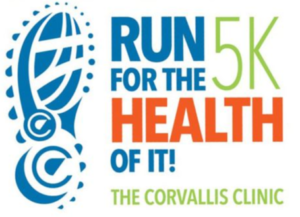
For Americans, March marks the one-year anniversary of the onset of the COVID-19 pandemic. But it also marks the return of spring, and in many places, the re-opening of gyms and fitness centers. While people are eager to jump back into their fitness routines, there are some critical factors to consider before doing so. Many of us have spent the last year becoming more sedentary than we may actively realize, but you are not alone. Our bodies have adjusted to this change and may not be as ready to jump back into physical activities as our minds may be. This article will outline some simple yet safe and effective methods for returning to previous exercise and physical fitness levels.
The first step in returning to physical activity after a prolonged absence, and arguably most important, is easing back into it.
It is vitally important to remember this to avoid injury and disappointment. Start small, both with your workouts and expectations. Start with light activity roughly three times a week for about thirty minutes or less. This will get your body used to the idea of physical activity once again and remind certain muscles that they still exist and have a purpose. Warm-ups and cooldowns will help avoid DOMS (Delayed Onset Muscle Soreness), a concern for anybody using muscles that have been inactive for some time.
“I usually counsel patients to increase only one of frequency, intensity, or duration of exercise at a time, not two, and especially not all three. That is asking for trouble. Increase one incrementally, no greater than 10% at a time. That’s how to avoid injury.” – Matthew Taylor, MD, Concussion Care, Sports Medicine
It is essential to realize that your state of mind matters a great deal here as well. Failure is tough to cope with, so avoid setting yourself up for failure with false expectations. For most people, returning to your previous fitness level will be a journey and will take time. That being the case, it would not make sense to expect the same time running a mile that you may have had a year ago. So temper your expectations and set realistic goals to avoid disappointment and frustration, which would likely dampen your will to continue exercising. Setting achievable goals will help you feel accomplished while simultaneously working safely back toward your desired fitness level. Think stepping stones. For example, if you previously ran for 5 miles a day, start walking or jogging for 1 mile. Once that feels comfortable, move up to 2 miles, then 3, and so on.
“Interval training is a highly effective and efficient form of exercise. For example, when returning to running, consider a walk-run program that begins with walking for 1-2 minutes, then jogging for 30-60 seconds. Perform this interval for 4-6 bouts. The jogging interval can be gradually progressed by 30-60 seconds each session until the desired duration is achieved.” – Paul Jaques, DPT, CSCS, OCS, Physical Therapy
Here are some tips for easing back into your workouts:
Use both warm-up and cooldown activities for each workout session. Your body needs time to prepare your muscles for more strenuous use, so make sure to warm up and do dynamic stretching for 10-20 minutes before your workout. Try to do warm-ups that focus on the muscle groups you plan to work the most. Cooldown activities should also include dynamic stretching.
For the first few weeks, contain your focused workout sessions to about three a week. Your body will need more time to rest and rejuvenate than when working out more consistently. Not allowing your body enough rest between workouts could lead to an easily avoided injury. Create a routine. Getting back into a consistent routine can be challenging, so create a routine that is easy to maintain with your schedule and stick to it.
“Place your workout on your daily schedule. If you schedule your workout at a specific time, you will be more likely to maintain your commitment to staying healthy. Sometimes, you can do more than just joining a gym. As an added benefit, join a scheduled class and make friends to help keep you motivated to return. Consistency can help you feel accomplished while reaping the benefits of exercise.” – Angela Passanise, DO, Sports Medicine
Just like sleeping, the more consistent and patterned your routine is, the more quickly and comfortably your body will adjust.
Gradually easing back into an active lifestyle is the safest approach for both your mind and your body. The past year has been challenging for everyone, so there is no reason for you to feel bad about your current fitness level or body image. You are not alone. We have been dealing with an unprecedented worldwide pandemic that has uprooted our everyday lives in many ways, including our access to physical activity. Return to fitness activities with tempered expectations and a positive mindset, and you will be on the road to success.
 Are you getting ready for physical activity? We are excited to announce The Corvallis Clinic’s 3rd annual Run for the Health of It 5K!
Are you getting ready for physical activity? We are excited to announce The Corvallis Clinic’s 3rd annual Run for the Health of It 5K!
When: Saturday, October 2nd, 2021 – 8:30 AM
Where: The Corvallis Clinic Asbury Building, 3680 NW Samaritan Dr., Corvallis
Learn more and register online at corvallisclinic.com/race. All proceeds will benefit local high school athletic departments.
